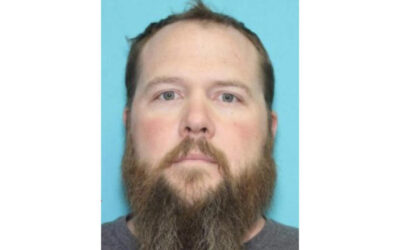
DeFilippis and Hughes have another piece attacking Dr. Lott’s new book The War on Guns (UPDATE: DeFilippis and Hughes discretely note by their byline that they have updated this piece, but we haven’t taken the time to go through it again to see what they have changed.). Past responses to Evan DeFilippis and Devin Hughes claims are available here and here. You will see that many of these claims have already been address in past responses, but as is very typical for DeFilippis and Hughes, they ignore responses that already exist and just assume that their readers won’t check their claims.
UPDATED: Here is Lott’s response to their most recent claims:
1) National Research Council report found that the data did not support Lott’s theory
Evan DeFilippis and Devin Hughes: The central finding in that book [More Guns, Less Crime] — that rates of gun ownership and the existence of “right to carry” laws reduce violent crime — have been the subject of numerous subsequent studies, the most sophisticated of which conclude Lott’s results are specious. (A National Research Council report found that the data did not support the theory.)
DeFilippis and Hughes incorrectly describe the National Research Council report. In the report, the NRC simply said that it could not draw any conclusions with respect to right-to-carry laws.
Although it examined a wide variety of gun laws, the NRC panel could not identify one in particular that made a statistically significant difference. Only on right-to-carry laws was there a dissent from this conclusion. James Q. Wilson pointed to the panel’s own regressions, all of whice found that right-to-carry reduces murder rates.
In the previous 15 years, there had been only one other dissent. Academics who don’t sign on to an NRC report are not invited back to future panels. This creates strong pressure not to dissent and to agree with reports that refuse to say anything matters. In any case, the NRC report found more support for my findings than for any other study.
Here are quotes from the executive summary of the NRC report:
For right-to-carry laws, the committee concluded: “If further headway is to be made, in the committee’s judgment, new analytical approaches and data are needed.”
For violence and suicide: “The committee also recommends further studies of the link between firearms policy and suicide.”
For restricting access: “The committee recommends that work be started to think carefully about possible research and data designs to address these issues.”
For prevention programs and technology: “The committee recommends that firearm violence prevention programs should be based on general prevention theory, that government programs should incorporate evaluation into implementation efforts, and that a sustained body of empirical research be developed to study the effects of different safety technologies on violence and crime.”
For criminal justice interventions: “The committee recommends that a sustained, systematic research program be conducted to assess the effect of targeted policing and sentencing aimed at firearms offenders.”
DeFilippis’ and Hughes’ claim that a study by John Donohue et. al. represents the most sophisticated study on concealed carry. In fact, there are significant errors with that research. Unfortunately, they assume that the adoption of “shall-issue” or “right-to-carry” laws causes a large, immediate increase in the number of permits. But many states with right-to-carry laws make it difficult to obtain permits. Compared to the rest of the country from 1999 to 2010, states that adopted right-to-carry laws actually experienced a less rapid increase in the share of the adult population with permits. Other comments are available here.
2) Lott dismisses the link between guns and suicide
Evan DeFilippis and Devin Hughes assert:
The NRC report’s larger conclusion, after reviewing the research? “Overall, the U.S. studies have consistently found that household gun ownership is associated with a higher overall risk of suicide.” The exact opposite of Lott’s claim.
DeFilippis and Hughes omit the previous sentence in the NRC report: “It is not yet clear if the individuals who used a gun to commit suicide would have committed suicide by another method if a gun had not been available.” And the executive summary stated that no conclusion had been reached, only that: “The committee also recommends further studies of the link between firearms policy and suicide.” DeFilippis and Hughes cite other studies without including passages that similarly acknowledge the possible substitutability of different methods of suicide.
DeFilippis and Hughes ignore a survey of economists and criminologists who have done empirical research on firearms. This survey shows a 60%-to-40% margin believing that the presence of a gun in the home does not cause an increase in the risk of suicide. Economists overwhelmingly took this position, while criminologists agreed with it by a margin of only two-percentage points.
See also here for some general responses.
3) Lott is the progenitor of the myth that mass shooters seek out “gun free” zones
Evidence on the mass public shooters picking gun-free zones is available here.
In the “War on Guns,” I spend a paragraph discussing the James Holmes’ case as it pertains to the issue of gun-free zones.
Citing Mother Jones magazine, DeFilippis and Hughes start off with the claim:
Yet the main reason Holmes decided against attacking an airport, according to passages in 36 pages of handwritten notes gathered during the post-shooting investigation, is that he didn’t want his motive to be construed as terrorism.
I have no idea what Holmes’ “main reason” was for not attacking the airport. But the first reason he lists is “substantial security.”

Evan DeFilippis and Devin Hughes: This research revealed that, of the seven theaters showing “The Dark Knight” within 20 minutes of the killer’s house, only one prohibited firearms. (It’s worth mentioning just how arbitrary and suspiciously convenient that 20-minute cutoff is. Had he extended the study to theaters that were 21 minutes away, he’d be forced to include the Arapahoe Crossings 16 complex, which also posted signs forbidding guns.)
In fact, the only reason that they know about the signs at the Arapahoe Crossings 16 complex is because I already provided that information. Most of the other theaters that were farther than 20 minutes away also allowed permitted concealed handguns. The 20 minute distance was arbitrary, but the point is that of all the movie theaters that were somewhat close only one posted signs banning concealed handguns and that is the one that he went to. He clearly went to the closest movie theater that banned concealed handguns. In any case, I have publicly provided information on other theaters (it is readily available on my website). Arapahoe Crossings 16 complex was 23 minutes from Holmes apartment.
DeFilippis and Hughes: In classifying theaters as gun-free zones, Lott makes the suspect assumption that any theater without a visible “No Weapons Allowed” sign must necessarily allow firearms. This ignores the fact that businesses might ban guns as a matter of internal policy but nevertheless be reticent to advertise that policy. Indeed, we know that Lott’s assumption is wrong, because we made follow-up calls to the theaters in Lott’s data set. Esquire Theater, for instance, which is within the 20-minute circle of Holmes’s apartment, disallows weapons as a matter of policy, yet it has no posted signs.
There are several problems with this claim. 1) The Esquire movie theater can have any “internal” policy that it wants. But if the customers aren’t notified of the theater’s preferences, moviegoers will be bringing their permitted concealed handguns into the theater. 2) Esquire Theater was not showing the Batman movie when Holmes attacked, so this unstated policy was hardly relevant.
DeFilippis and Hughes: Lott also cites statements in the rambling “manifesto” of Elliot Rodger, who killed six people and wounded 14 others in Isla Vista, California, near the University of California at Santa Barbara campus. But Rodger makes it crystal clear that it was police officers he was worried about encountering, not armed civilians.
I agree that Elliot Rodger wanted to avoid police, just as I had noted that Holmes had wanted to avoid airport security. It is true that these individuals did not make specific statements about armed civilians. But the point of these two references was to show that these two particular killers avoided places where people with guns might be able to stop them. It answers DeFilippis’ and Hughes’ question: “Are we really to believe that sociopaths like James Holmes” pay attention to such details?”
Evan DeFilippis and Devin Hughes: He misclassified shootings in Umpqua Community College in Oregon; Hiahleah, Florida; and elsewhere as occurring in gun-free zones. But as Politifact has reported, Umpqua permitted people with concealed-carry licenses to carry arms on campus.
For those questioning whether the community college is a gun-free zone, here is a statement from the recent past president of the college in the New York Daily News.
The Register-Guard newspaper in Eugene, Oregon had this from the Interim community college President Rita Calvin (this link is now broken):
Interim community college President Rita Calvin said security officers are on campus around the clock, but are not armed. The campus is a gun-free zone. . . .
Schools can clearly prevent faculty members from carrying a gun on campus. Here, the pertinent case is: Court of Appeals of Oregon. Jane DOE, Plaintiff-Appellant, v. MEDFORD SCHOOL DISTRICT 549C, Defendant-Respondent.073765E2; A137804. Decided: November 18, 2009.
In our view, the school district’s internal employment policy does not represent the sort of exercise of the “authority to regulate” firearms that the statute preempts. Because, as we have noted, the trial court erred in dismissing the declaratory judgment action rather than issuing a judgment containing a declaration as to the matter in dispute, we must vacate the judgment and remand for entry of a judgment declaring that the school district’s policy is not preempted by ORS 166.170. . . .
Employment policy thus seems clear. What has not been decided is whether schools can, as a condition of enrollment, prohibit students from carrying guns. But it seems likely that Oregon courts would make a decision similar to their decision in regard to school employees. Wouldn’t this include non-faculty school employees, if it were stated in their employee handbooks?
In another, more recent case, the Oregon state Appeals Court ruled about a challenge to Western Oregon University’s administrative rule banning guns. In that case, the court decided that the school did not have the authority to make such a rule. Administrative rules, however, are a different matter from stated employment or enrollment policies in student or faculty handbooks. OREGON FIREARMS EDUCATIONAL FOUNDATION, an Oregon nonprofit corporation, Petitioner, v. BOARD OF HIGHER EDUCATION and BOARD OF HIGHER EDUCATION and Oregon University System, Respondents.A142974. Decided: September 28, 2011.
In this administrative rule challenge, ORS 183.400(1), petitioner Oregon Firearms Educational Foundation seeks the invalidation of an administrative rule of the Oregon State Board of Higher Education and the Oregon University System (respondents) that imposes sanctions on persons who possess or use firearms on university property. Petitioner contends that the rule exceeds respondents’ statutory authority, that it is preempted by ORS 166.170, and that it violates the Second Amendment to the United States Constitution. We conclude that the rule is preempted and therefore do not address whether it also violates the Second Amendment. Accordingly, we conclude that the rule is invalid. . . .
If guns are banned through statements in student and faculty handbooks, then only non-student and non-faculty members would be clearly able to carry on school/college campuses. But then there is the question of whether schools/colleges can ban guns in buildings. It appears that the Oregon state Appeals Court has answered that question in the affirmative.
That exception, petitioner contends, demonstrates the legislature’s intention to expressly authorize persons with concealed handgun permits to carry firearms in public buildings, including buildings on state college and university campuses. We reject the contention that a statutory exception to criminal sanctions for the possession of a handgun in public buildings indicates an intention to require public educational institutions to permit concealed handguns. . . .
As to the Yoyito-Café in Hialeah, Florida, DeFilippis and Hughes rely on a report by Michael Bloomberg’s Everytown. Although Everytown mentions that guns are banned in restaurants which earn 50 percent or more of their revenue from alcohol, the group doesn’t seem to have bothered to check whether that was the case for this restaurant. Apparently, the restaurant was at the time a very popular venue for parties serving alcohol. If Bloomberg’s group had checked, they would have found that it was a gun-free zone.
The organization of the bar in the center of the restaurant is also important for this determination. After it reopened, I called up the Café to check on these facts.
4) There’s little to no evidence that wielding a gun makes you safer
Academic studies showing this point is available here. A survey of academics on this point see here.
My book cites separate studies by Lawrence Southwick and Gary Kleck. DeFilippis and Hughes cite one study on the other side that has a lot of problems with it. In addition, DeFilippis and Hughes ignore that the National Crime Victimization Survey (NCVS) has a significant bias against finding defensive gun uses. This survey has a screening question that asks people whether they have been victims of violent crime. Because people who have used guns defensively are likely to avoid becoming victims, the question biases the survey by making it less able to pick up on defensive gun uses.
Gun ownership improves safety both by deterring criminals from attacking and by giving defendants the means to protect themselves. The NCVS survey does not study deterrence, but only deals with the latter point. Among peer-reviewed, nationwide studies by criminologists, economists and law professors, approximately two-thirds find that right-to-carry laws reduce violent crime.
5) Evidence-free assertions about guns and children
Who knows how they define “evidence-free assertions,” but here is one of the peer-reviewed studies that I have published on guns and children. Another peer-reviewed study is available here.
DeFilippis and Hughes repeat other criticisms that I have already dealt with elsewhere (see here and here).





0 Comments